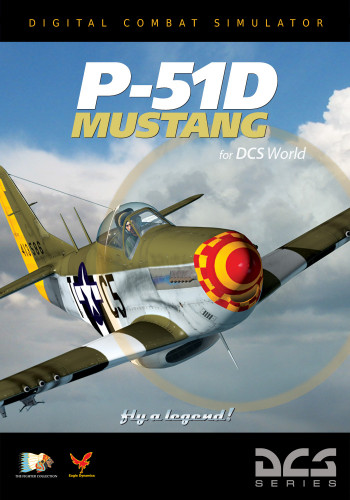
The P-51D Mustang is not only one of the most iconic aircraft ever built, it is also arguably the most effective all-round fighter-bomber of WW2. Armed with six .50 caliber Browning machine guns, the Mustang was also able to carry either two bombs or up to ten unguided rockets.
The Mustang began combat operations with the RAF in April 1942, immediately proving its effectiveness both as a fighter and in ‘Rhubarb’ low-level fighter-bomber attacks against enemy airfields, supply trains and in the close air support role. It was especially dominant in dogfights above 20,000. With its graceful lines, distinctive bubble canopy and clipped wings, the ‘D’ variant rapidly became the mainstay of the United States 8th Air Force in Europe.
Localization: Chinese, Deutsch, English, French, Russian
Free disk space is required: 700 Mb

Requires DCS World version 2.7.6 or above!
One of the most revolutionary and effective combat aircraft of WWII, the British de Havilland Mosquito was in service with the Royal Air Force (RAF) from 1940 to 1961. A brilliant and innovative design, the 'Mossie' left a bright and lasting mark in the history of aviation and served the United States, Canada, and Australia.
An airframe built mostly of wood, to save on scarce metal supplies, earned the Mosquito the nickname "The Wooden Wonder". It was also known as ‘Freeman’s Folly’ after the Air Marshal who backed its production.
Localization: English, Russian
Free disk space is required: 900 Mb

Requires DCS World version 2.5.6 or above!
Excelling both as a pure fighter and in the ground attack role, the powerful Republic P-47D Thunderbolt gave Allied Air Forces a whole new cutting edge in World War 2. Nicknamed the ‘Jug’, its eight M2 Browning .50-calibre (12.7 mm) machine guns packed a devastating punch: the P-47D could fire 3,400 rounds of ammunition in a continuous, 30-second stream of high-explosive lead, shredding any enemy aircraft in its sights.
With a bubble canopy providing great all-round visibility, a range of 1,000 miles at 10,000 feet and a massive 18-cylinder, 2,600-horsepower R-2800-59 Double Wasp turbocharged radial engine giving it a top speed of 428 mph, the Jug acted as a highly effective Allied bomber escort in raids on Nazi-occupied Europe. More than twice the weight of the Spitfire, its sheer size, rugged construction and armoured cockpit meant the P-47D could shrug off astonishing amounts of enemy fire.
Localization: English

Requires DCS World version 2.5.5 or above!
One of the deadliest air superiority fighters of WW2, the Fw 190A-8 ‘Anton’ also punched above its weight for the Luftwaffe as a bomber-killer, fighter-bomber and night fighter. Armed with four wing-mounted MG 151 20 mm cannons and two nose-mounted 13 mm MG 131 machine guns, the single-seat Anton bit really hard in a scrap.
Combined with the Fw 190 A-8’s speed, rates of climb and dive and all-round agility, this fearsome amount of firepower gave Allied pilots a real challenge. Even the P-51D Mustang and the Mk.IX Spitfire struggled to match it in a dogfight. When they did land rounds on it, the Anton’s side and rear cockpit armour and armoured engine cowling made it harder to down.
Localization: English

Requires DCS World version 2.5.4 or above!
I-16 - Soviet single-engine monoplane fighter of 1930s created by aircraft designer Nikolai Polikarpov’s design bureau. It was the one of the world’s first fighters with landing gear retraction system. It was I-16 which stood the air fighting against famous Messerschmitt Bf 109.
Over a period of its history I-16 was upgraded a lot. New modifications of aircraft were created and adopted almost every year. I-16 type 24 was further development of I-16 type 18.
Localization: Russian, English
Free disk space is required: 300 Mb








